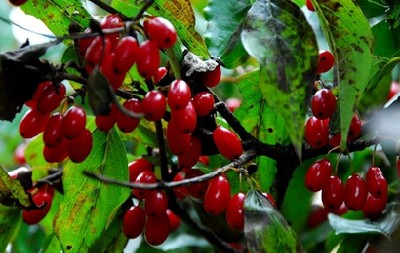The 9th day of the 9th lunar month is the traditional Chongyang Festival, or Double Ninth Festival. It usually falls in October in the Gregorian calendar.

In an ancient and mysterious book Yi Jing, or The Book of Changes, number "6" was thought to be of Yin character, meaning feminine or negative, while number "9" was thought to be Yang, meaning masculine or positive. So the number nine in both month and day create the Double Ninth Festival, or Chongyang Festival.
Chong in Chinese means "double." Also, as double ninth was pronounced the same as the word to signify "forever", both are "Jiu Jiu," the Chinese ancestors considered it an auspicious day worth celebration. That's why ancient Chinese began to celebrate this festival long time ago.
Wearing Cornel Twigs (Dogwood)

The cornel (dogwood) is a species of evergreen arbor; it is heavy-scented plant whose fruit is edible and stock and leaves can be medicinal materials. They can expel insects, get rid of the humidity, help digestion and cure inner heat. It puts out purple flowers in spring and bears, in autumn, purplish-brown fruit that is sour, puckery and mild in nature.
The custom of wearing cornel twigs (dogwoods) was already very popular in the Tang Dynasty (618-907); it was made an official day – off for common people by an imperial edict. The ancient people believed that planting cornel twigs (dogwoods) on Double Ninth Festival could prevent diseases and avoid disasters. They also wear the cornel twigs (dogwoods) on arms or heads or put them in sachets. Most of people that follow the custom are women and children, and in some places men also wear them. In Song Dynasty, people sent each other colorful silk cut into cornel twigs (dogwoods) or chrysanthemum and wore them.
Enjoying Chrysanthemum Flowers
Chrysanthemum originated in China and was recorded in some Chinese books as early as the 5th century B.C. The flower was introduced, as imperial flower, into Japan in the Tang Dynasty. Then it was introduced into Britain in the 12th century, into the continent of Europe in the 17th century, and into the USA in the 19th century. Also known as “yellow flower”, chrysanthemum is of varied species in the composite family. Though its florescence lasts long, this perennial herb usually begins to bloom in the 9th lunar month, lending much festive flavor to the Double Ninth Day. That’s why the month is also referred to as “the month of chrysanthemum”.
